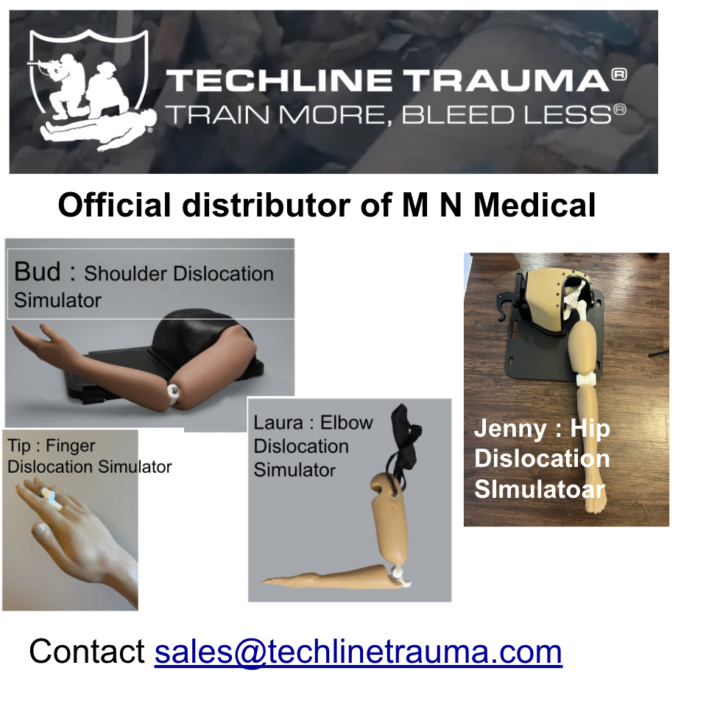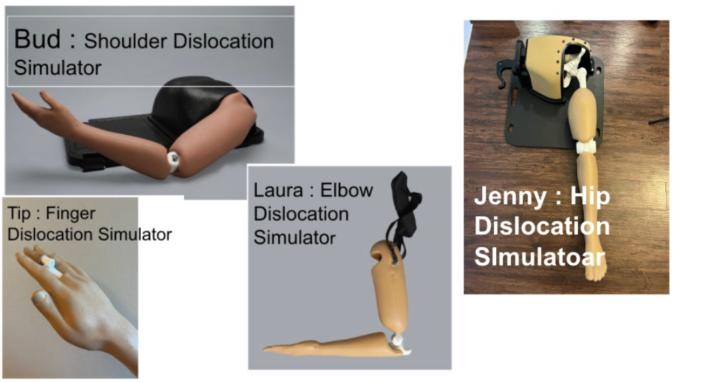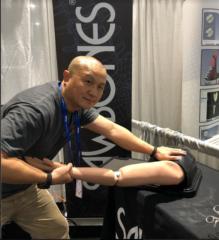Pure reaction after 1st reduction
One screen shows the pure reaction after a first real hip reduction with the Captain Morgan technique, the other shows safe, repeatable practice on our Jenny hip simulator—same “clunk,” no risk.
0
0
Captain Morgan reduction technique on Hip Dislocation
The Captain Morgan technique is a creative and effective way to reduce a hip dislocation, and it can be safely practiced on our Jenny hip simulator. In this method, the provider places one foot on the patient’s thigh—like the Captain Morgan stance—while stabilizing the pelvis and using controlled leverage to guide the femoral head back into the socket. This technique is popular because it requires less strain on the provider and can be done quickly in an emergency setting. Our models allow learners to rehearse this maneuver in a safe, repeatable way, building confidence without risk to real patients. Interestingly, a version of this technique was also portrayed in the medical drama Pitt, where creative body positioning was used to reduce a hip dislocation under emergency conditions. Practicing on simulators helps bridge the gap between textbook knowledge, clinical improvisation, and real-world application.
0
0
Our products introduction
Our Joint Reduction Simulation Lab features a family of four models designed for safe, repeatable, and realistic training: - Bud (Shoulder Model): Teaches the most common type of dislocation, letting learners practice multiple reduction techniques and feel the “clunk” of success. - Laura (Elbow Model): Focuses on one of the toughest joints to reduce, often seen in sports like wrestling and jiu-jitsu, helping trainees build real confidence. - Tip (Finger Model): A compact trainer that covers dorsal, volar, and lateral dislocations, ideal for teaching careful handling and joint-specific approaches. - Jenny (Hip Model): A powerful simulator for a high-stakes emergency injury, complete with practice for posterior and anterior dislocations and techniques like Captain Morgan. Together, these models provide a complete, low-risk way to master reduction techniques across the most important joints.
0
0

It is a process!
At the Joint Reduction Simulation Lab, the process begins with a short introduction to joint anatomy and the mechanics of dislocation. Participants then review step-by-step reduction techniques tailored to each joint. Using our simulators—Bud (shoulder), Laura (elbow), Tip (finger), and Jenny (hip)—learners practice safely, repeating reductions until they can feel the realistic “clunk” of a successful maneuver. Instructors guide participants through judgment calls, safety checks, and post-reduction care. The goal is to create a structured learning pathway where theory, demonstration, and hands-on practice come together, giving providers confidence and competence before ever treating a real patient.
0
0
1-4 of 4
powered by

skool.com/joint-reduction-simulation-lab-5712
Joint Reduction Simulation Lab trains safe, hands-on dislocation reductions with simulators, bridging knowledge to real clinical skill.
Suggested communities
Powered by

